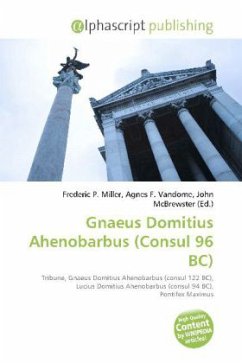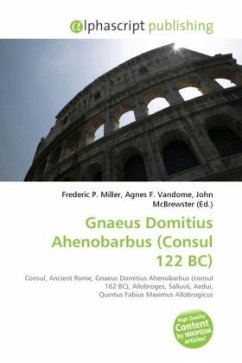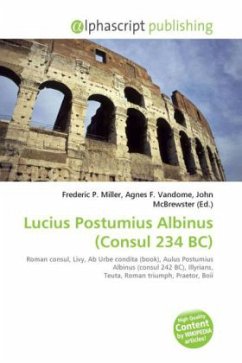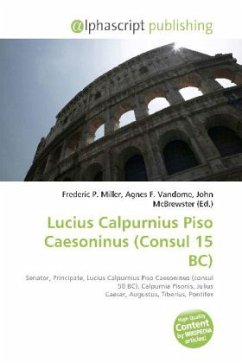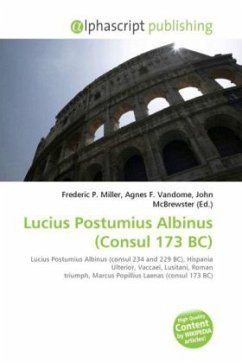
Lucius Domitius Ahenobarbus (Consul 16 BC)
Versandkostenfrei!
Versandfertig in 6-10 Tagen
32,99 €
inkl. MwSt.

PAYBACK Punkte
16 °P sammeln!
Please note that the content of this book primarily consists of articles available from Wikipedia or other free sources online. Lucius Domitius Ahenobarbus (fl. 1st century BC & 1st century) was the son and only child of consul Gnaeus Domitius Ahenobarbus and Aemilia Lepida. His mother was a paternal relative of the triumvir Marcus Aemilius Lepidus. His paternal grandmother was Porcia Catonis (sister to Cato the Younger). As a young man Lucius was a renowned and devoted charioteer, perhaps to the point of obsession. He was betrothed in 36 BC, at the meeting of Octavianus and Mark Antony at Tar...
Please note that the content of this book primarily consists of articles available from Wikipedia or other free sources online. Lucius Domitius Ahenobarbus (fl. 1st century BC & 1st century) was the son and only child of consul Gnaeus Domitius Ahenobarbus and Aemilia Lepida. His mother was a paternal relative of the triumvir Marcus Aemilius Lepidus. His paternal grandmother was Porcia Catonis (sister to Cato the Younger). As a young man Lucius was a renowned and devoted charioteer, perhaps to the point of obsession. He was betrothed in 36 BC, at the meeting of Octavianus and Mark Antony at Tarentum, to Antonia Major, the daughter of the latter by Octavia. He was aedile in 22 BC, and consul in 16 BC. After his consulship, and probably as the successor of Tiberius, he commanded the Roman army in Germany, crossed the Elbe, where he set up an altar to Augustus, and penetrated further into the country than any of his predecessors had done. He also built a walkway, called the pontes longi, over the marshes between the Rhine River and the Ems River. For these achievements he received the insignia of a triumph. He died in 25. He was the paternal grandfather of the Emperor Nero and the maternal grandfather of Valeria Messalina, third wife of the Emperor Claudius.




